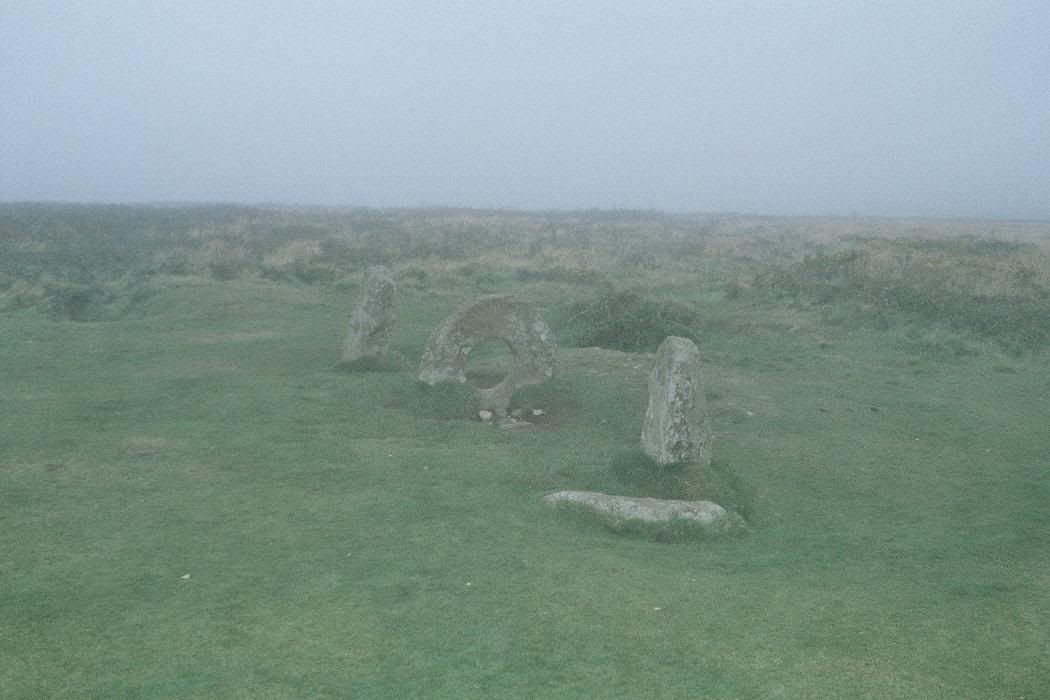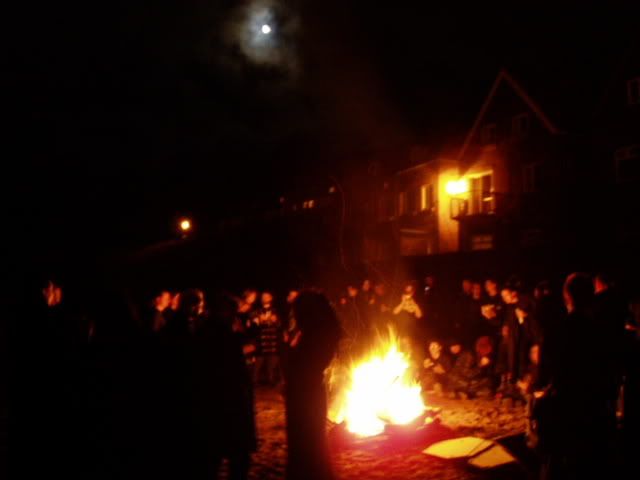 I freely admit that this is not my own work - I have naught idea where I found this article - it was either online or I copied it down from a magazine or one of my many books, at some stage, way back when, for my own use and as a handy reference guide, but having re-read it, I am sure that whoever drew this up wouldn't mind seeing it posted somewhere else - especially if I am not laying claim to it, but spreading the word!Please remember that all herb-use should be double checked with your doctor - especially if you have a medical condition or if you are pregnant.
I freely admit that this is not my own work - I have naught idea where I found this article - it was either online or I copied it down from a magazine or one of my many books, at some stage, way back when, for my own use and as a handy reference guide, but having re-read it, I am sure that whoever drew this up wouldn't mind seeing it posted somewhere else - especially if I am not laying claim to it, but spreading the word!Please remember that all herb-use should be double checked with your doctor - especially if you have a medical condition or if you are pregnant. Be responsible in your applications!
The uses of herbs are many and diverse, and are steeped in centuries of folklore. Despite this, in the 21st century even orthodox practitioners of medicine are accepting their value and healing properties. Medically, decoctions can be made of the leaves or roots and taken when normal medicines are not desired or have failed to work. Magically, rituals can be enacted using the appropriate herbs - perhaps by rolling an oiled candle in them or by making a pouch to be kept in a secret place. There are too many herbs to feature within the scope of this article, but many useful ones are listed below, with their uses.
BASIL Medical - To relieve tiredness. Apply to stings and bites. Magical - Exorcism, happiness, peace, protection, purification, cleansing. Ruled by Mars.
BAY Medical - Ailments of liver and spleen, stings and bites (berries), menstrual problems, colds, coughs and flu, excess wind, urinary problems, ear pain, bruises. Magical - Purification, protection, healing, psychic powers, energy, strength, meditation. Ruled by the Sun.
BETONY Medical - liver disease, digestive problems, stomach ache, vomiting, headaches, colds, shortness of breath, excess wind, menstrual problems, kidney and gall stones, bruises. Magical - Exorcism, depression, banishing nightmares, purification, protection. Ruled by Jupiter.
BIRCH Medical - Mix leaf juices or sap with water for kidney and gall stones, and to wash sore mouths. Magical - Love, protection, new beginnings. Ruled by Venus.
BLACKTHORN (SLOE) Medical - Infusion of leaves for laxative, styptic, astringent, asthma, nosebleed. Magical - Cursing.
BURDOCK Medical - Women's problems, ulcers, sores, snake bites, bladder problems, sciatica, burns, diarrhoea, kidney and gall stones. Magical - Ruled by Venus.
CEDAR Magical - Money, protection, healing, purification, banishing, justice, peace, spirituality. Ruled by the Sun.
CHAMOMILE Medical - All pains, stitches, liver, spleen, tiredness, kidney and gall stones, colic, bladder problems, colds, menstrual problems, headaches, stomach ache, joint pain. Magical - Luck, justice, sleep, money. Ruled by the Sun.
CINNAMON Medical - Astringent, wind, gland stimulant, antacid, helps stomach upsets and diarrhoea, colds, sore throats, general tonic, sedative. Magical - Money, healing, psychic powers, energy, strength, justice, protection, strengthening love. Ruled by the Sun.
CINQUEFOIL Medical - Infection, fever, sore mouth, ulcers, cancer, open sores, fainting, toothache, coughs, shaking hands, shingles, itching, sciatica, bowel pain, bruises, bleeding wounds. Magical - Anointing, energy, power, strength, luck, justice, healing, inspiration, love. Ruled by Jupiter.
CLARY SAGE Medical - Menstrual problems, hormonal problems, PMT, broken bones, depression, aphrodisiac. Magical - Ruled by the Moon.
CLOVE Medical - Insect repellent, painkiller, especially for toothache. Magical - Exorcism, purification, love, money, protection. Ruled by Jupiter.
COMFREY Medical - Healing of cuts, rashes and broken bones, cystitis, bruises, lung problems, menstrual problems, mastitis, piles, painful joints. Magical - Protection while travelling. Ruled by Saturn.
DANDELION Medical - Diuretic, cystitis, menstrual problems, sedative, liver, gall bladder, spleen, fevers, bathing sores. Magical - Ruled by Jupiter.
ELDER/ELDERFLOWER Medical - Colds, sore throats, menstrual problems, styes, ear pain, diuretic, sunburn, headache, leg ulcers, nervousness, burns, snake bites. Magical - Blessing, Cursing, Exorcism. Ruled by Venus.
EYEBRIGHT Medical - All eye problems, weak memory. Magical - Clairvoyance. Ruled by the Sun.
FERN Medical - Kills worms, eases stomach problems, ulcers, wounds. Fern smoke drives away insects. Magical - Exorcism (indoors), to bring rain (outdoors), good luck, protection. Ruled by Mercury.
FEVERFEW Medical - Womb problems, coughs, colds, bladder problems, kidney and gall stones, depression, shortness of breath, colic. Magical - Protection when travelling. Ruled by Venus.
GALANGAL Magical - Money, prosperity. Ruled by Mars.
GERANIUM Medical - Depression, pregnancy, broken bones. Magical - Fertility, health, love, protection. Ruled by Venus
IVY Medical - Kills worms. Menstrual problems, kidney and gall stones, diuretic, stomach ache, headache, ulcers, burns, ear sores, spleen, hangovers. Magical - Protection. Ruled by Saturn.
JUNIPER BERRIES Medical - Broken bones, bites and stings, diuretic, wind, stomach problems, coughs, cramps, weak memory, weak sight, sciatica, kills worms, restores lost appetite. Magical - Protection against thieves, protection against rape, exorcism, love, scrying, healing. Ruled by the Sun.
LADIES' MANTLE Medical - Menstrual problems, PMT, to stop bleeding, vomiting, fertility, averts miscarriage, all wounds. Magical - Ruled by Venus.
LAVENDER Medical - Menstrual problems, hormonal problems, headaches, strokes, cramps, faints, stomach problems, diuretic, wind, toothache, sunburn. Magical - Protection against rape, scrying, anointing, exorcism, to see ghosts, cleansing, love. Ruled by Mercury.
LEMON Medical - To relieve tiredness, grinding of teeth. Magical - Psychic powers. Ruled by the Moon.
LILY OF THE VALLEY Medical - Weak memory, sore eyes, palsy, stroke. Magical - Anointing, happiness, peace, healing, love, knowledge, protection. Ruled by Mercury.
LOOSESTRIFE Medical - Sight problems, sore eyes, sores, ulcers, spots and scabs, sore throat. Magical - Harmony, the home, peace. Ruled by the Moon.
LUNGWORT Medical - Lung or chest problems, coughs, pneumonia, venereal diseases. Magical - Ruled by Jupiter.
MARIGOLD Medical - General tonic, chicken pox, measles. Magical - Clairvoyance, divination, love. Ruled by the Sun.
MARJORAM Medical - Headaches, acid stomach, restores appetite, coughs, lung problems, expels poison, bites and stings, diuretic, menstrual problems, itching, tinnitus, earache. Magical - Love, protection, purification, cleansing. Ruled by Mercury.
MELISSA (LEMON BALM) Medical - General Tonic. Relaxation, insomnia, fever, vomiting. Magical - Ruled by Jupiter.
MINT Medical - Colds, sore throats, bleeding, aphrodisiac, vomiting, mastitis, earache, lessens menstruation, headache, sores and scabs, digestion, kidney and gall stones, sore mouth, bad breath, wind, bites and stings. Magical - Money, love, luck, justice, cleansing, healing. Ruled by Venus.
MISTLETOE Medical - Spleen, ulcers, sores, fainting, strokes, earache. Magical - Love, protection. Ruled by the Sun.
MOONWORT Medical - Menstrual problems, bleeding, vomiting, bruises, broken bones. Magical - Clairvoyance, divination, love. Ruled by the Moon.
MUGWORT Medical - Menstrual problems, kidney and gall stones, diuretic, neck pain, sciatica, cramps. Magical - Crystal scrying, clairvoyance, divination, banishing, releasing, protection, psychic centres (opening). Ruled by Venus.
MULLEIN Medical - stomach problems, cramps, coughs, toothache, piles, diuretic, warts, sore throats, boils, joint inflammation. Magical - Determination, courage, exorcism, protection. Ruled by Saturn.
NUTMEG Medical - Wind, vomiting, digestion, diarrhoea. Magical - Scrying, luck, the home, gambling, justice, psychic centres (opening).
OAK Medical - Bleeding, diarrhoea, vomiting, diuretic, antidote to poison, inflammation, fever, lessens menstruation. Magical - Energy, fertility, divination, power, strength, protection, purification. Ruled by Jupiter.
PASSION FLOWER Magical - (Leaves and flowers). Love, scrying. Ruled by Venus.
ROSEMARY Medical - Depression, broken bones, colds, headaches, stomach problems, liver, conjunctivitis, drowsiness, nervousness, fainting, hangover, gum and toothache, bad breath, wind, sight problems, heart problems, coughs, joint problems, grief, skin problems. Magical - Can be used as a substitute for any other herb. Healing, insomnia, to restore youth, exorcism, love, intellectual powers, purification, protection. Ruled by the Sun.
SAGE Medical - Liver disease, diuretic, menstrual problems, bleeding, ulcers, sores, infertility, vomiting, headaches, joint pain. Magical - Spirituality, healing, prosperity. Ruled by Jupiter.
SELF-HEAL Medical - Broken bones, ulcers, bruises, inflammation, bleeding, headaches. Magical - Ruled by Venus.
ST. JOHN'S WORT Medical - Depression, wounds, bruises, swellings, vomiting, bites and stings, stomach problems, fits, sciatica, fainting. Magical - Invincibility, banishing, exorcism. Ruled by the Sun.
SWEET BASIL Medical - General tonic, bites and stings, childbirth. Magical - Love, healing, prophecy, purification, scrying, peace. Ruled by Venus.
THYME Medical - Whooping cough, shortness of breath, kills worms, childbirth, warts, sciatica, wind, stomach problems. Magical - Healing, purification, cleansing, banishing nightmares, grief. Ruled by Venus.
VALERIAN Medical - Diuretic, menstrual problems, poison antidote, coughs, bites and stings, wind, sight problems, sores and wounds. Magical - Love, sleep. Ruled by Mercury.
VERVAIN Medical - Womb problems, kills worms, stomach problems, coughs, kidney and gall stones, mouth ulcers, piles, headaches, skin problems. Magical - Love, lust, purification, wealth, warding off psychic attack. Ruled by Venus.
WHITE WILLOW BARK Medical - Nose bleeds, mouth wounds, vomiting, lung problems, colic, sore eyes, sight problems, diuretic, spots, warts, dandruff, fever. Magical - The home, wishes. Ruled by the Moon.
WORMWOOD Medical - Diuretic, swellings, jaundice, bruises, sore throat, eye problems, bites and stings, itching, colic, kills worms. Magical - Binding, clairvoyance, divination, exorcism, love, protection, prophecy. Ruled by Mars.
YARROW Medical - Colds and flu, sore throats, women's problems, wounds, ulcers, baldness, stomach problems, incontinence, toothache, cramps. Magical - Banishing, releasing, clairvoyance, divination, exorcism, love, marriage, protection. Ruled by Venus.


 Loch Earn, St Fillans, Pertshire
Loch Earn, St Fillans, Pertshire




 As this night is the perfect night to draw out some tarot cards or cast the runes, M and I decided to just do that.
As this night is the perfect night to draw out some tarot cards or cast the runes, M and I decided to just do that.




 Altai Mountains - Siberia
Altai Mountains - Siberia